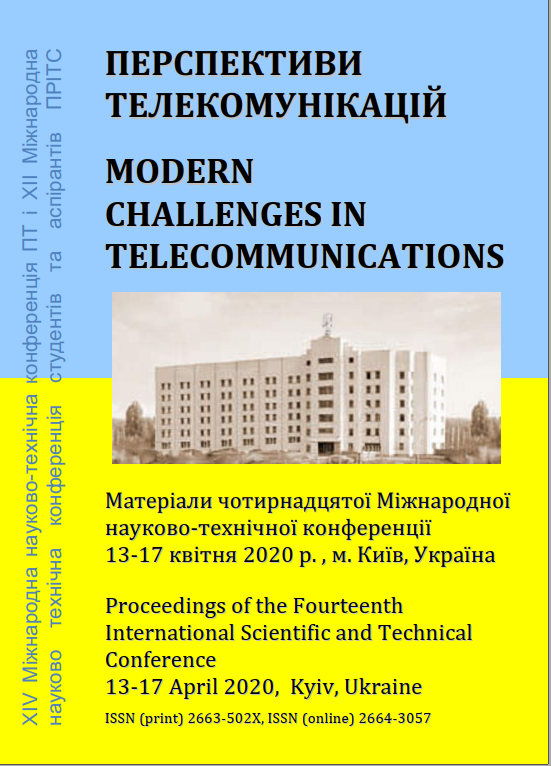БЕЗПРОВОДОВА КООПЕРАТИВНА РЕТРАНСЛЯЦІЯ З ТЕХНОЛОГІЄЮ HARQ
Ключові слова:
Cooperative relaying, wireless communication, cooperative HARQАнотація
Wireless cooperative relaying with the HARQ
The paper describes a hybrid automatic request (HARQ) protocol for cooperative relaying, considering the advantage of using cooperative schemes. The proposed algorithm for selecting the relay method allows to increase the capacity and energy efficiency of the system.
Посилання
S. Kravchuk, L.Afanasieva Wireless cooperative relaying without maintaining a direct connection between the source and target receiver terminals// Information and Telecommunication Sciences, No 2, рр. 5-11, 2019 (DOI: https://doi.org/10.20535/2411-2976.22019.5-11).
Афанасьєва, Л. ПРОТОКОЛ АДАПТИВНОЇ РЕТРАНСЛЯЦІЇ ДЛЯ КООПЕРАТИВНИХ МЕРЕЖ [Електронний ресурс] / Ліана Афанасьєва, Сергій Кравчук // Збірник матеріалів Міжнародної науково-технічної конференції «ПЕРСПЕКТИВИ ТЕЛЕКОМУНІКАЦІЙ». – 2019. – С. 192–195. Режим доступу : URL : http://conferenc.its.kpi.ua/proc/article/view/168177.
Ільченко М.Ю., Кравчук С.О. Телекомунікаційні системи. – К.: Наукова думка, 2017.
Maaz M., Lorandel J., Mary Ph. Energy efficiency analysis of hybrid-ARQ relay-assisted schemes in LTE-based systems// EURASIP Journal on Wireless Communications and Networking. – №22, 2016 (https://doi.org/10.1186/s13638-016-0520-9).
Maliqi F., Bassi F., Duhamel P., Limani I. Simplified analysis of HARQ cooperative networks using finite-state Markov chains // 25th European Signal Processing Conference (EUSIPCO), 28 Aug.-2 Sept. 2017. –p.2006-2010 (doi:10.23919/eusipco.2017.8081561).
##submission.downloads##
Як цитувати
Номер
Розділ
Ліцензія
Авторське право (c) 2020 Ліана Олександрівна Афанасьєва, Сергій Олександрович Кравчук, Ігор Іванович Шевченко, Михайло Миколайович Чуб

Ця робота ліцензується відповідно до Creative Commons Attribution 4.0 International License.
Authors who submit to this conference agree to the following terms:a) Authors retain copyright over their work, while allowing the conference to place this unpublished work under a Creative Commons Attribution License, which allows others to freely access, use, and share the work, with an acknowledgement of the work's authorship and its initial presentation at this conference.
b) Authors are able to waive the terms of the CC license and enter into separate, additional contractual arrangements for the non-exclusive distribution and subsequent publication of this work (e.g., publish a revised version in a journal, post it to an institutional repository or publish it in a book), with an acknowledgement of its initial presentation at this conference.
c) In addition, authors are encouraged to post and share their work online (e.g., in institutional repositories or on their website) at any point before and after the conference.

